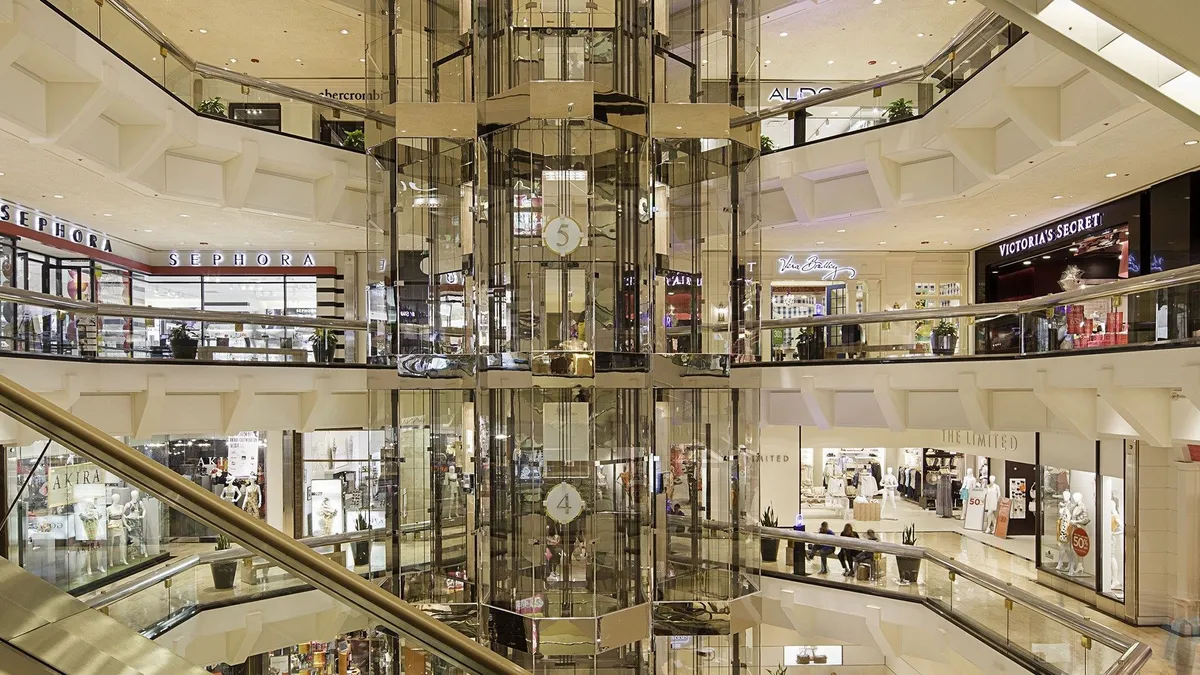Dive Brief:
-
The traditional U.S. shopping mall business model needs a significant revamp if it is to survive, according to a CBRE report analyzed by The Wall Street Journal.
-
The real estate research firm said malls need to shift from anchor department stores and smaller accessory and apparel chains — which take an average of 79% of leasable mall space combined — to incorporate businesses that experience less competition from e-commerce, such as restaurants, beauty outlets and home furnishings stores.
-
Still, lease agreements can be as long as 10 years and sometimes require department stores' approval for major physical changes to the mall itself.
Dive Insight:
Today's consumers, particularly millennials, are looking for experiences they can't get from buying merchandise online when they venture out to shopping malls. That's why malls and even grocery stores with extra features are popping up more frequently.
Perhaps no other concept exemplifies this shift more than the American Dream mall. Construction on one such complex is underway in New Jersey. When complete, it will include the standard retail and dining establishments as well as a theme park. According to REBusiness Online, the amusement mall will also feature a DreamWorks water park, a Nickelodeon Universe theme park, a Big Snow indoor ski and snowboard park, a 1,350-seat Cirque du Soleil theater, Cinemax movie theaters, a Sea Life aquarium, a Legoland Discovery Center, a miniature golf course and an ice skating rink.
A similar mall is in development in Miami. That project, at 6 million square feet, would surpass the size of the Mall of America in Minnesota. Developers are hoping it can compete for the attention of tourists visiting Orlando's famous theme parks.
Retail innovations don't have to be as ambitious as those to draw shoppers. The Related Group is developing a multi-story, 72,000-square-foot Whole Foods store as the anchor to a downtown Atlanta luxury residential complex. This Whole Foods goes beyond the typical grocery store — it's being designed as a gathering spot, featuring a bar, a cooking school and restaurant space.
Such establishments aim to meet a social need in the community in addition to being a place to buy necessities.












